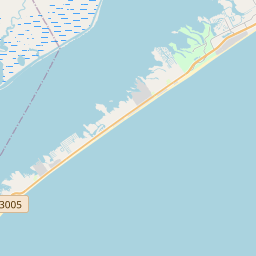West Galveston Island
Historical marker location:






Earliest known inhabitants of this area were the now extinct Karankawa Indians, alleged to be the only American tribe to practice cannibalism in rituals.
Cabeza de Vaca was shipwrecked near here in 1528, and is credited as the first European to visit the island. He, and other explorers including La Salle, are known to have touched land in this area without harm from the Karankawas. However, buccaneer Jean Lafitte was not well received by the Indians and a major battle was engaged between the pirates and the natives.
Stage coach service was once established between Galveston and Freeport, with West beach as highway, and a ferry at San Luis Pass.
This area was a significant point of debarcation for slave traders who were prohibited from sailing directly into Galveston City's harbor although a major slave market existed there. Near the turn of the century a railroad carried hundreds of visitors to a race track near the center of the island, and an important lace manufactory was located here.
The West Island is an important site for migratory shore birds, with more than 95% of America's species inhabiting the area during the year.
Since 1957 West Island has rapidly become a major recreational and resort area with hundreds of leisure homes fronting Gulf, canals and bay
As one of the most visible programs of the Texas Historical Commission (THC), historical markers commemorate diverse topics in Texas history, including: the history and architecture of houses, commercial and public buildings, religious congregations, and military sites; events that changed the course of local and state history; and individuals who have made lasting contributions to the state, community organizations, and businesses.
Texas is known for its barbecue, and one of the most famous barbecue restaurants in the state is Kreuz Market in Lockhart. The restaurant has been in operation since 1900 and is still family-owned.
In 1816, Pirate Jean Lafitte established a short-lived settlement on Galveston Island, which became a haven for smugglers and criminals. However, the pirate era came to an end when the Mexican government took control of Texas and drove out Lafitte and his fellow pirates.
The 19th century saw Galveston County become a major seaport and commercial center. In 1839, the city of Galveston was founded and quickly grew in size and prosperity. The city became an important hub for the Texas cotton industry and played a significant role in the Texas Revolution and the Civil War.
However, Galveston faced numerous challenges throughout its history, including devastating hurricanes. The most notable was the Great Storm of 1900, which remains the deadliest natural disaster in U.S. history, claiming thousands of lives and causing extensive damage. Despite the destruction, Galveston rebuilt and implemented engineering projects, including the construction of a seawall, to protect the city from future hurricanes.
Today, Galveston County is a popular tourist destination, known for its beautiful beaches, historic architecture, and vibrant cultural scene. The county has successfully preserved its rich heritage while embracing modern development, making it a unique and diverse place to visit and live.
Galveston County Timeline
This timeline provides a condensed summary of the historical journey of Galveston County, Texas.
- 1528 - Spanish explorer Cabeza de Vaca becomes the first known European to set foot on Galveston Island
- 1816 - Pirate Jean Lafitte establishes a base on Galveston Island
- 1825 - Galveston becomes a port of entry for the newly formed Republic of Mexico
- 1836 - Galveston becomes an important port during the Texas Revolution
- 1839 - The City of Galveston is officially incorporated
- 1854 - Galveston becomes the largest city in Texas
- 1900 - Galveston is struck by a devastating hurricane, resulting in over 6,000 deaths
- 1901 - Oil is discovered in nearby Spindletop, leading to a period of economic growth
- 1957 - The world's first offshore drilling rig is built in Galveston
- 2008 - Hurricane Ike causes significant damage to Galveston